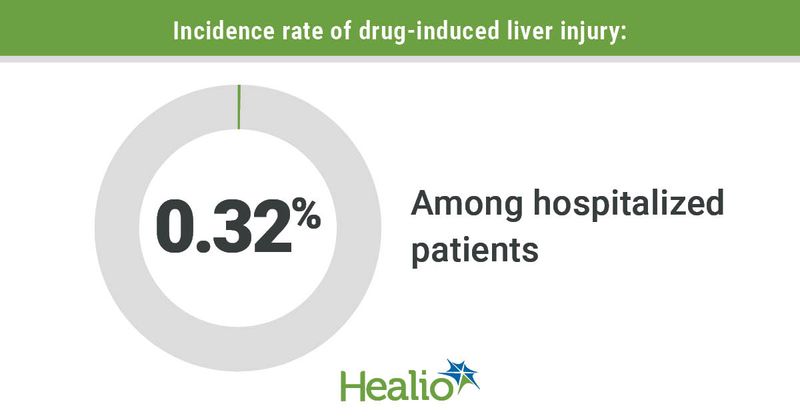Long hospital stay, high mortality among hospitalized patients with drug-induced liver injury
Patients with drug-indued liver injury had a long hospital stay, low morbidity and high mortality, according to a study published in the British Journal of Clinical Pharmacology.
“The diagnosis of [drug-induced liver injury (DILI)] requires consideration of multiple factors. The rational application of systematic screening and manual identification can improve the efficiency of group entry,” Xianghao Kong, MD, from the pharmacy department, Medical Security Center, Chinese People's Liberation Army General Hospital in Beijing, China, and colleagues wrote. “DILI patients have a long hospital stay, low morbidity and high mortality. Voriconazole was the drug with the highest incidence. The DILI characteristics of different drugs were very different. The use of LiverTox data could facilitate clinical diagnosis. Patients with hyperlipidaemia, cardiovascular disease, pre-existing liver disease and surgical history are at a higher risk of DILI and need to be closely monitored.”

Kong and colleagues used the Adverse Drug Events Active Surveillance and Assessment System-2 to collect data on the 156,570 patients hospitalized in 2019. They used the Roussel Uclaf Causality Assessment Method to assess patients who met study criteria. The DILI incidence rate was 0.32% (n = 490).
The study was a retrospective case-control study based on suspected drugs, length of hospital stay and height- and weight-matched controls. Investigators determined risk factors with logistic regression.
“Anti-infective agents, antineoplastic agents and nonsteroidal anti-inflammatory drugs were the major categories of drugs causing DILI, and the highest incidence of DILI was due to voriconazole,” the researchers wrote.
Both the latency period and hospital stay among patients with cholestasis were relatively long, per study data.
Factors correlated with higher risk for DILI included patients with hyperlipidemia (adjusted odds ratio [AOR] = 1.884), cardiovascular disease (AOR = 1.465), pre-existing liver disease (AOR = 1.827) and surgical history (AOR = 1.312).
“It is recommended that first-line medical staff pay attention to the liver enzymes of patients with pre-existing liver disease and intervene in time to prevent the progression of DILI,” Kong and colleagues wrote.”
